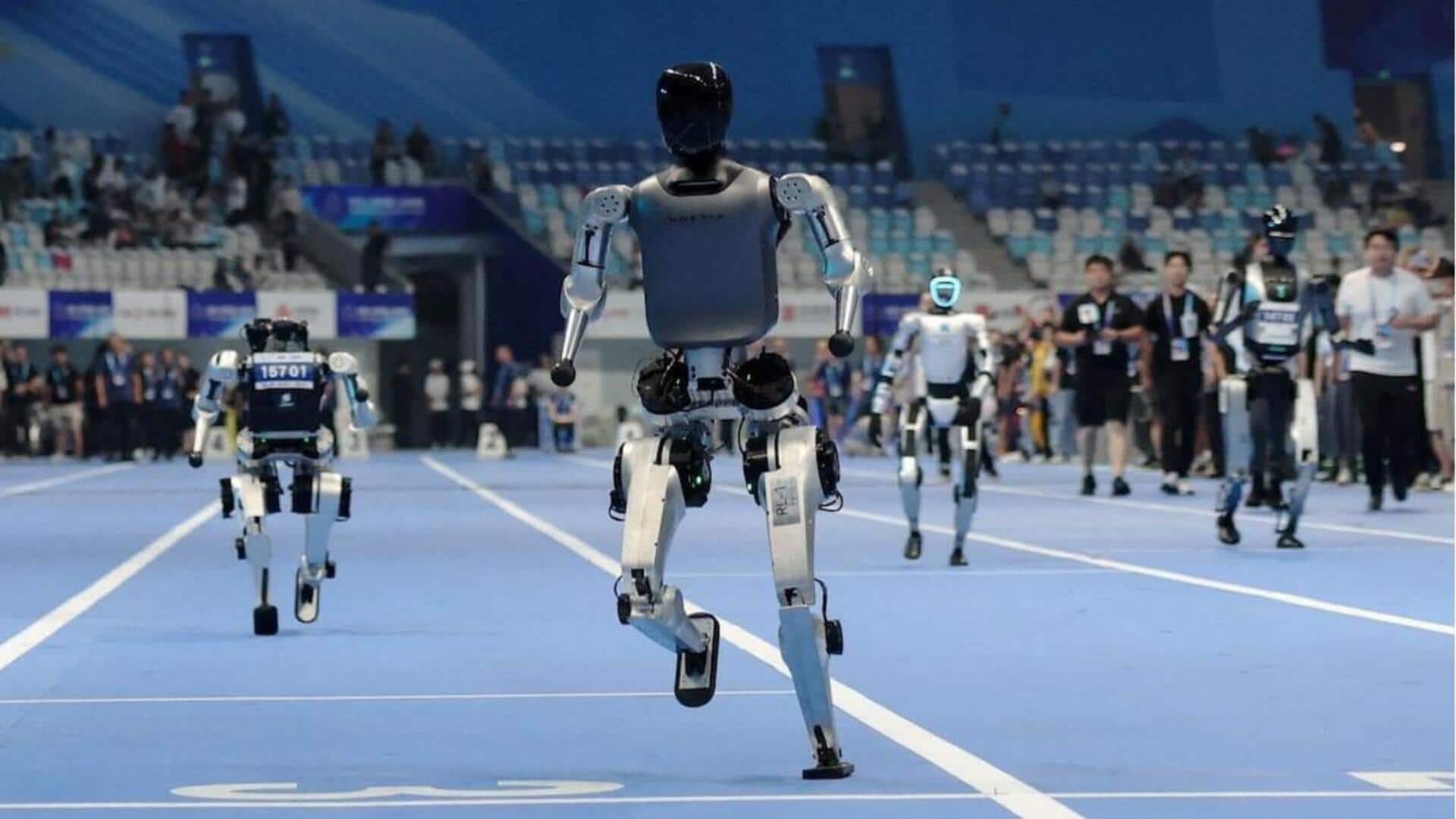
World's first robot Olympics ends. Are humanoids ready for mainstream?
What's the story
The recent "robot Olympics" in Beijing, officially known as the World Humanoid Robot Games, showcased over 500 robots from 16 countries competing in 26 events. These included track races, soccer matches, boxing bouts and even cleaning hotel rooms. The event was a test of embodied AI's limits but also highlighted how far we still are from having humanoid robots as reliable home assistants or workplace helpers.
Progress
Humanoids can perform tasks but need human assistance
While the robots could perform tasks like running, boxing and playing soccer, they often needed human assistance. The matches were more like clumsy embraces than actual fights, and soccer games saw metal limbs strewn across the field after chaotic crashes. However, there were also signs of progress such as a robot that got up on its own or a cleaning bot that completed its task in under 10 minutes. State-backed Unitree Robotics dominated athletic events, clinching gold in three races.
Investment
China is heavily investing in humanoid robotics
China has invested heavily in humanoid robotics, with plans for a trillion-yuan ($137 billion) fund for AI and robotics start-ups. The robot Olympics was not just a public spectacle but also an opportunity to gather training data from robots failing in unpredictable situations. Every fall became a labeled data point and every collision taught lessons about physics, making mistakes the fuel for embodied AI.
Approach
US firms are also investing in robotics to rival China
Beyond China, humanoid robotics is shifting toward practical, real-world use. Tesla's Optimus project remains widely watched, but its goal of producing 10,000 units by late 2025 has been delayed due to issues like overheating parts and limited battery performance. Amazon is taking a more controlled approach, deploying Agility Robotics' Digit in warehouses for tasks such as bin handling and unloading vans. Start-ups like Figure AI are attracting massive funding and preparing to scale humanoid production from prototypes to thousands annually.
Future
Humanoids are moving from controlled demos to messy public tests
The robot Olympics in Beijing underscored both the promise and infancy of humanoid robotics. Robots are certainly "walking," but far from running. The games, though filled with falls and fumbles, provided invaluable data for AI development. For China, it's a strategic stage for robotics supremacy. For global competitors, it serves as both a benchmark and a call to close the gap.